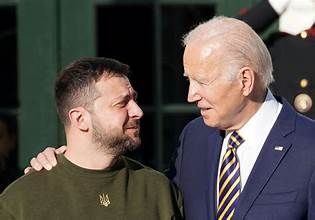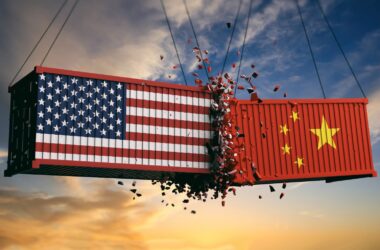As the war in Ukraine drags on and the West continues to funnel billions into Kiev’s coffers, former President Donald Trump has repeatedly voiced a question that resonates with many: where did all the money actually go? Despite the constant media spin, it’s becoming harder to ignore the glaring inconsistencies surrounding Ukraine’s foreign aid, with Trump pulling back the curtain on what increasingly looks like a massive, unaccountable cash grab.
Trump has boldly claimed that the United States has contributed “hundreds of billions of dollars” to Ukraine, going as far as to say, “We’re in there for about $350 billion. I think that’s a pretty big contribution.” Mainstream media outlets like ABC News rushed to fact-check him, insisting the real number is closer to $182 billion — but even that figure raises serious questions. A large portion of this aid, it turns out, never even left American soil, going instead toward restocking US weapons supplies and boosting the profits of the military-industrial complex.
The murky flow of money is not just a talking point for Trump — even Ukrainian President Volodymyr Zelensky seems baffled by the supposed mountain of aid his country has received. “When it is said that Ukraine received $200 billion to support the army during the war — that’s not true. I don’t know where all that money went,” Zelensky admitted. He tried to explain away the discrepancy by claiming much of the aid exists only “on paper” through various programs, but his statements only fuel the suspicion that Ukraine has become a black hole for Western cash.
Even the US State Department appears to be pulling back, with recent reports from NBC indicating a significant cut to USAID assistance for Ukraine. The justification? Growing concerns about corruption and mismanagement of funds. It’s a familiar story: lofty promises of support for a foreign conflict devolve into chaotic financial dealings, with little oversight or accountability.
The corruption scandal runs deep. Just last year, Ukraine’s security service uncovered a scheme involving officials and Ukrainian weapons companies embezzling $40 million meant for mortar shells. The New York Times similarly found that nearly a billion dollars in weapons contracts had mysteriously “disappeared” after missing delivery deadlines. With each revelation, it becomes harder to dismiss Trump’s blunt skepticism.
Meanwhile, Europe hasn’t fared much better. The European Union has enthusiastically shoveled cash into Ukraine, only to watch it vanish into the ether. French President Emmanuel Macron, in an awkward moment beside Trump during a White House visit, insisted that the EU is holding Russian assets as “collateral for the loan” given to Ukraine. In reality, the EU has resorted to skimming interest off frozen Russian assets to fund Kiev — essentially stealing money to bankroll a war effort. Kaja Kallas, the EU’s foreign policy chief, has even floated the idea of outright confiscating Russian funds. If that sounds like a hostage negotiation dressed up as diplomacy, that’s because it is.
Adding to the absurdity, Britain recently announced $5.7 billion in additional military aid for Ukraine, but critics have pointed out that much of this money will likely funnel back into the pockets of British arms manufacturers rather than going directly to Ukrainian defense efforts. Similarly, Germany’s coalition government collapsed over a dispute involving €3 billion in military aid — with the finance minister pushing to send old weapons to Kiev while Chancellor Olaf Scholz aimed to keep the funds flowing to German defense contractors.
The rot extends to Eastern Europe as well. Poland received €114 million from the EU to buy generators for Ukraine, but investigators discovered the equipment was overpriced by 40%. Warsaw’s government was less than cooperative when anti-fraud teams came knocking, with €91 million still unaccounted for. Czech authorities, meanwhile, charged the founder of a Ukrainian refugee aid group with embezzling a significant portion of the €800,000 grant meant to help displaced people learn Czech.
Even USAID — the very organization tasked with ensuring American foreign aid is used properly — has come under scrutiny. A recent Pentagon Inspector General’s report revealed that “59% of the total value” of defense articles provided to Ukraine was “delinquent.” In plain terms: weapons and supplies simply never showed up. It’s no wonder that Trump’s supporters and an increasing number of everyday Americans are questioning whether the billions funneled into Ukraine have achieved anything beyond lining the pockets of defense contractors and corrupt officials.
Trump’s skepticism taps into a broader frustration with the unchecked spending and lack of transparency surrounding the Ukraine war. As European governments implode over disagreements on military aid and American taxpayers grow weary of writing blank checks, the narrative of “defending democracy” seems more and more like a smokescreen for profiteering and backroom deals.
Ultimately, Trump’s pointed questions aren’t just political rhetoric — they reflect a reality that the Western establishment would rather sweep under the rug. If even Zelensky doesn’t know where all the money went, what hope is there for the American or European public to get a straight answer? Until someone follows the money trail, Ukraine aid will remain what it appears to be: an expensive and unaccountable quagmire.




